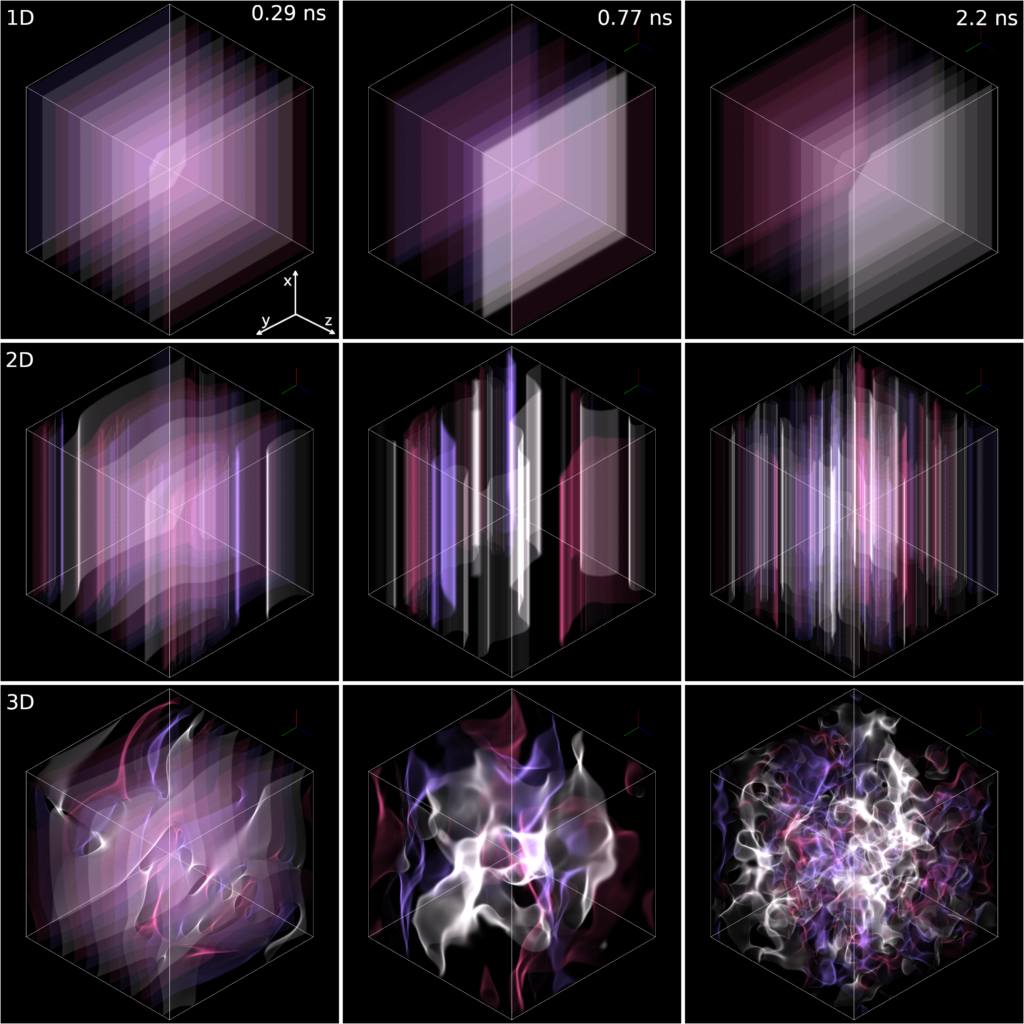Neutrino Fast Flavor Instability in Three Dimensions

Core-collapse supernovae and neutron star mergers are profligate producers of neutrinos that would be observable at neutrino observatories on Earth if they occur sufficiently close. The particular flavor (electron, muon, or tauon) of the neutrinos flying around as either system is exploding and ejecting matter also determines what elements are able to form by depositing energy into the expelled matter and by changing the ratio of neutrons to protons. We would very much like to compare the results of simulations of neutron star mergers and supernovae with events that we see in nature, but there is a key physical process that we do not yet understand, since it is very difficult and expensive to simulate. That is, neutrinos can change flavor in-flight, and they do so in a way that is deeply nonlinear, which has provided for decades of research in neutrino flavor change.
As of only a few years ago, we know that both systems are also subject to very rapid “flavor instabilities”, meaning that even if neutrinos are flying in straight lines, they can interact with the other neutrinos around them in a way that makes the whole crowd of neutrinos quickly change flavor. How fast? To what flavor? Everywhere, or just in special locations? We don’t know yet, though the field is rapidly advancing. In particular, there have recently been a large number of simulations of “toy model” problems of this instability, in which some representative distribution of neutrinos is thought up and simulated to show the effect of this instability on the putative neutrinos. However, these simulations have to date all been performed in a restricted number of dimensions. In order to make the simulations faster and computationally cheaper, one can pretend that space only has one or two dimensions, instead of all three. This shows the instability, but still leaves open the question of whether the restricted simulations are actually representative of reality.

In this work, we do the first three-dimensional simulations of the so-called “fast” neutrino flavor instability. Like we said, these simulations are very expensive, so we could not simulate an entire neutron star merger. Instead, we simulate a 8cm cube filled with a toy distribution of neutrinos. In the future, we will look at more realistic distributions and larger domains, but this simulation already takes a week to run on a supercomputer. Fortunately, our results show that, while there are significant differences in the details between 1D and 3D simulations, the growth of the instability and the mixture of neutrino flavors after the instability has mixed everything up match very well. However, we only try a handful of different initial conditions, which comes nowhere close to exploring the huge diversity of conditions present in astrophysical explosions. But if we assume that other 1D simulations are representative of their 3D counterparts, this greatly reinforces our confidence in the results of the many simulations performed to date with restricted dimensions.
This introduction was prepared by N3AS Fellow Sherwood Richers.
Read More:


